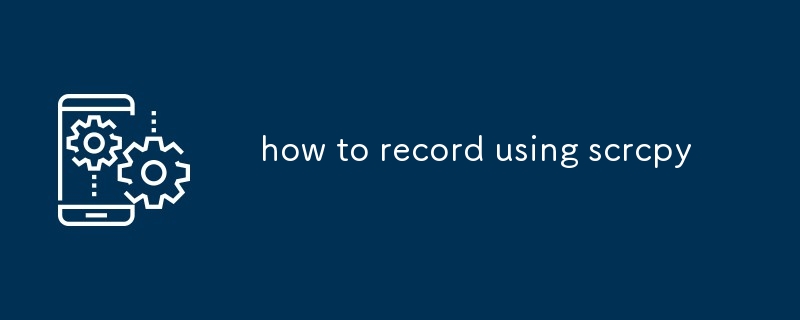
This article provides a guide on recording your Android device's screen using scrcpy, a free and open-source tool. It covers initiating recording, adjusting settings to enhance quality (bitrate, resolution, FPS, encoder), and troubleshooting common r

How do I initiate recording with scrcpy?
To initiate recording with scrcpy, simply run the following command in a terminal:
<code>scrcpy --record <filename.mp4></code>
Replace <filename.mp4> with the desired filename and path for your recording.
What settings can I adjust to enhance my scrcpy recording quality?
Several settings can be adjusted to improve the quality of your scrcpy recordings:
--bitrate option to set the bitrate of the recording. Higher bitrates result in better quality but larger file sizes.--resolution option allows you to set the resolution of the recording. Higher resolutions produce sharper images but require more processing power.--fps option sets the recording's frame rate. Higher frame rates create smoother videos but consume more CPU resources.--encoder option lets you specify the video encoder to use. Different encoders offer varying levels of compression and quality.How can I troubleshoot common scrcpy recording errors?
Error: "scrcpy: could not open display for device 'default'"
This error indicates that scrcpy is unable to connect to your device's display. Ensure that USB debugging is enabled on your device and that your device is connected to your computer.
Error: "scrcpy: no devices found"
Make sure your device is connected to your computer and that USB debugging is enabled. If your device is still not detected, try restarting scrcpy or your device.
The above is the detailed content of how to record using scrcpy. For more information, please follow other related articles on the PHP Chinese website!
 How to use the print function in python
How to use the print function in python
 How to compress html files into zip
How to compress html files into zip
 Can the appdata folder be deleted?
Can the appdata folder be deleted?
 What are the commonly used libraries in golang?
What are the commonly used libraries in golang?
 What to do if the blue screen code 0x0000007e occurs
What to do if the blue screen code 0x0000007e occurs
 asp what file
asp what file
 notepad++ official website
notepad++ official website
 Introduction to the meaning of invalid password
Introduction to the meaning of invalid password
 minidump.dmp
minidump.dmp




